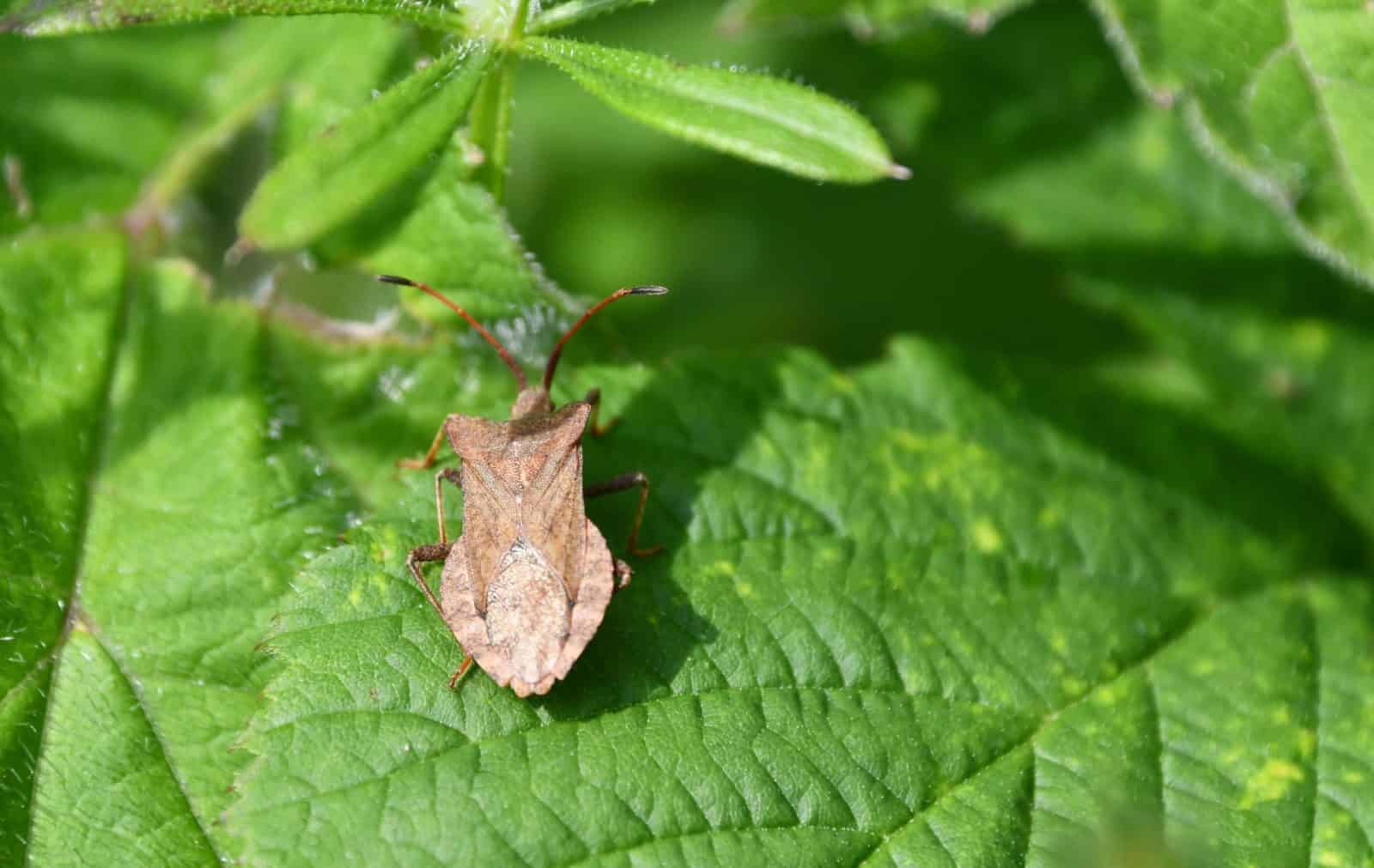With thousands of insects in the UK, it can be hard to know where to start when identifying them. But one of the first things to get used to is telling the key groups apart. This can be tricky, especially as many species move at speed, and there are also some fantastic mimics – some flies mimic bees impressively well!
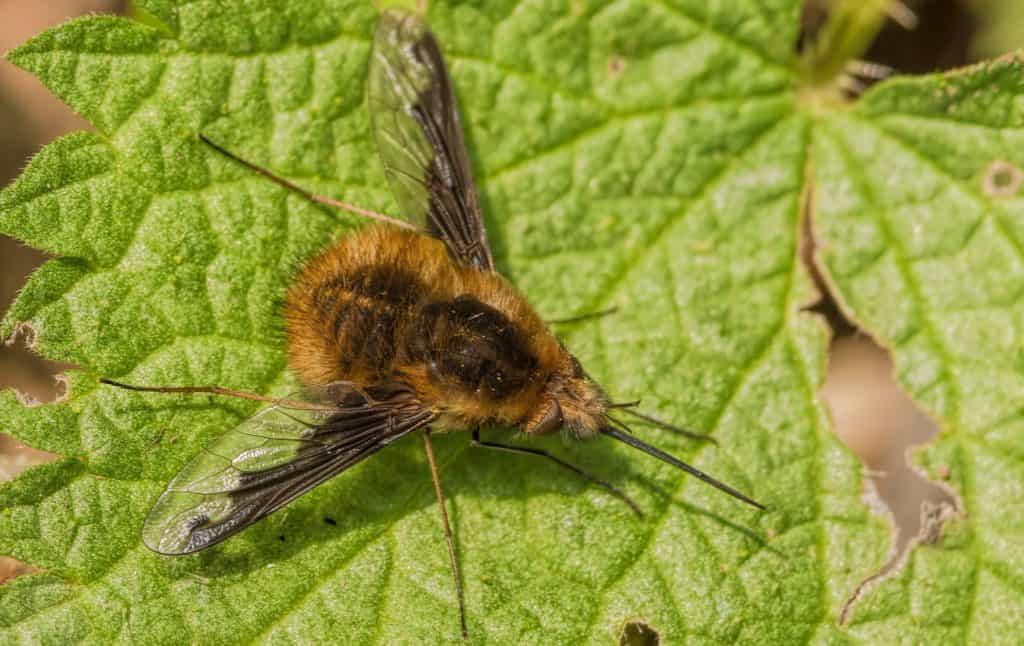
To get more familiar with the different groups, the BioLinks team have created some informative and accessible infographics highlighting each group’s key features – these are all included in the blog below for you to save and share.
But before delving into the different insect orders, you need to be sure that the creature you have is indeed an insect. Here are the key features that insects possess:
- One pair of compound eyes
- Three pairs of jointed legs
- One pair of antennae
- A body comprised of three sections – the head, thorax, and abdomen.
Once you’ve determined that it’s an insect, you will need to know which group (order) it belongs to. Here are some of the common insect orders found in the UK.
Beetles
Order: Coleoptera
A key feature of beetles is their hardened wing cases known as elytra. Typically, beetles have two pairs of wings; however, their forewings have become hardened. This feature gives beetles their scientific name ‘Coleoptera’, meaning ‘sheath winged’.
Other key features of this group include: membranous hindwings, chewing mouthparts, and usually one pair of compound eyes.
You can learn more about beetle morphology in our latest video on our YouTube channel.
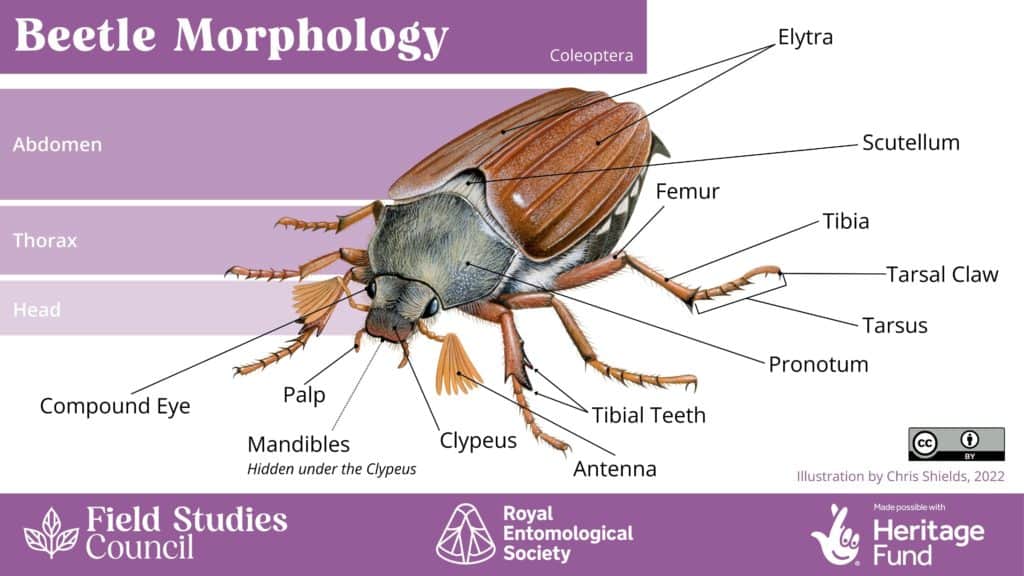
True Bugs
Order: Hemiptera
These small to large insects are found in multiple habitats, and they can vary greatly in shape, size, and colour. The order Hemiptera is broken down into multiple suborders, but this infographic depicts one of the most familiar and commonly encountered suborders (Heteroptera), which includes shield bugs, plant bugs, and forest bugs. But one thing that all Hemiptera have in common is their long feeding tube known as the ‘rostrum’, which allows them to pierce their food source and extract liquid from within it.
Their wings are also unique, as they do not meet at the midline of the abdomen when at rest. Additionally, the forewings have a partially thickened base, and the rest of the forewing is membranous – it is this feature that gives them their name, ‘Hemiptera’, which means ‘half-wing’.
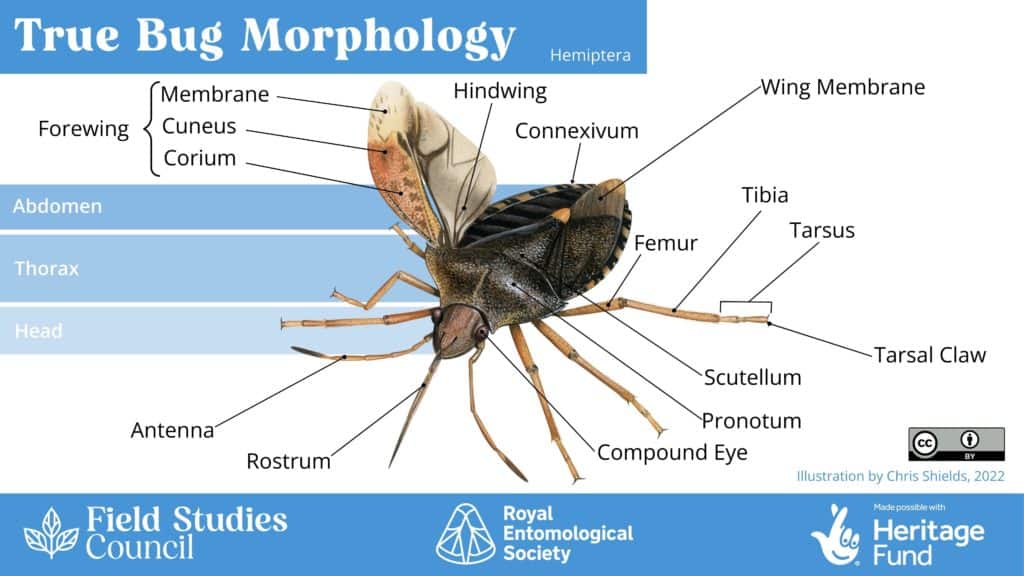
Flies
Order: Diptera
This group are the aerial acrobats of the insect world! Flies appear to have only a single pair of wings, as the hind wings have evolved into stabilising organs known as ‘halteres’. Halteres are small peg-like structures extending from their thorax. They can be tricky to spot in some species, but they can be easily seen on a cranefly.
There are other characteristics that make flies stand out, including a large moveable head, very large compound eyes, and sucking or piercing mouthparts.
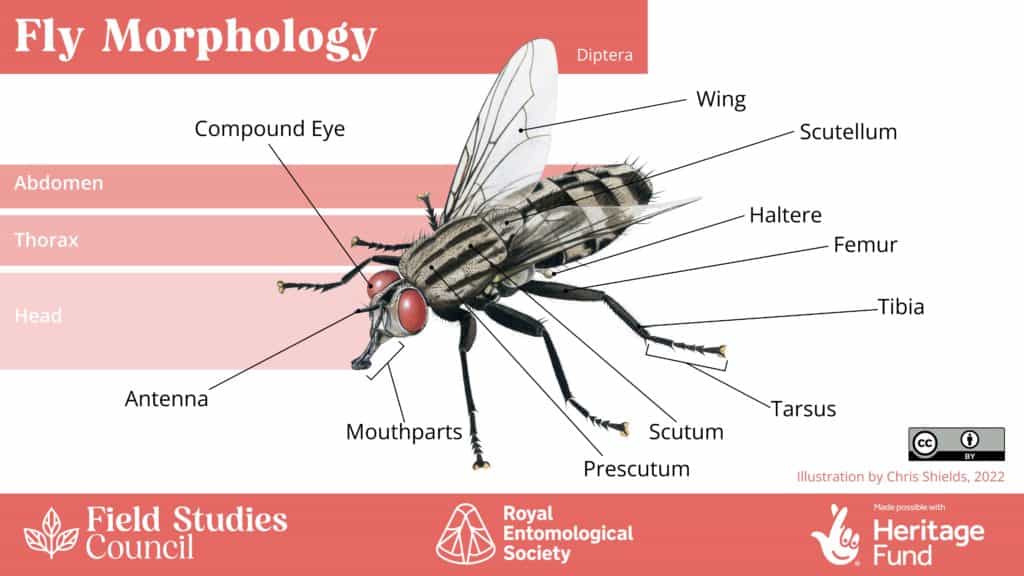
Caddisflies
Order: Trichoptera
Caddisflies spend most of their life in water as larvae, and they are often used as indicator species for water quality reports.
Adult caddisflies have elongated bodies, although two pairs of membranous wings often hide this. When resting, their wings are held in a tent-like formation over the abdomen (the diagram below illustrates how their wings may look resting or extended). Their wings are also covered in fine hairs and lack scales (unlike butterflies and moth wings). They also have long thread-like antennae used for sensing chemical cues (how insects interpret environmental stimuli and signals from other individuals).
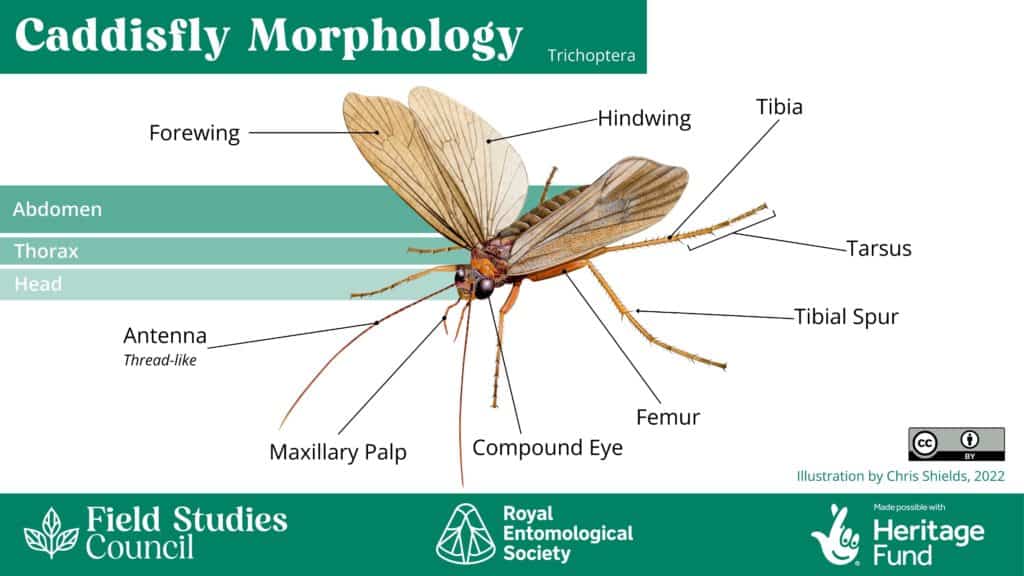
Mayflies
Order: Ephemeroptera
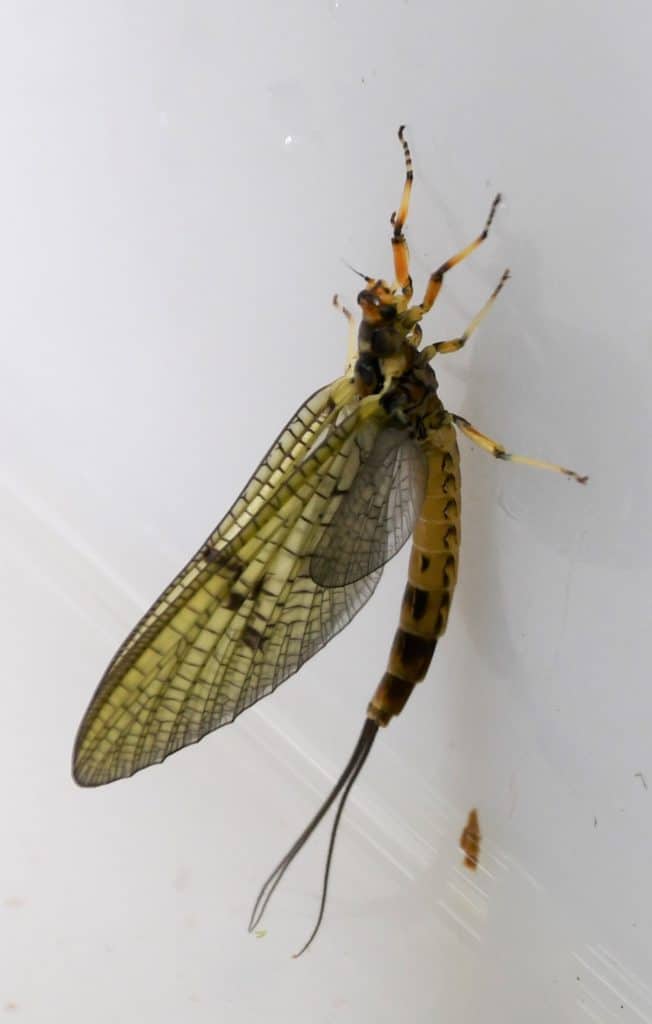
Mayflies are considered some of the most primitive living examples of winged insects. As adults, they have two pairs of wings. The larger, sail-shaped forewings are held vertically above the abdomen when at rest, alongside the smaller hindwings. This resting position gives them a signature ‘sailboat’ pose (our diagram illustrates their wings spread flat to show the difference in size between the forewings and hindwings).
The head of a mayfly consists of large compound eyes and very short mandibles. They have a ‘chunky’ thorax with a long-tapered abdomen attached. You can find obvious ‘tails’ at the end of the abdomen, also referred to as cerci. The number of cerci will vary with each species, but it is common for three to be present.
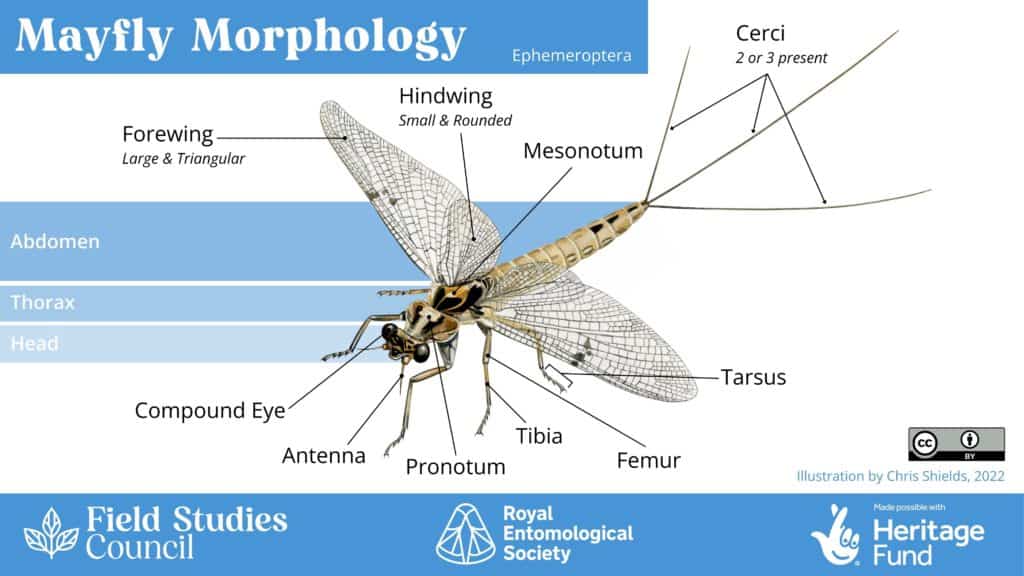
Stoneflies
Order: Plecoptera
Stoneflies are similar to caddisflies in a way that they are also considered one of the most primitive groups of flying insects. The name ‘Plecoptera’ translates to ‘braided wing’, which refers to the characteristic shape of the wing cells that result in a ladder-like pattern. Although they have two pairs of wings, they are rather poor fliers. Their wings lie flat against the top of their abdomen when resting.
Other key features include their long thread-like antennae, small beady compound eyes, and a pair of cerci at the end of their abdomen.
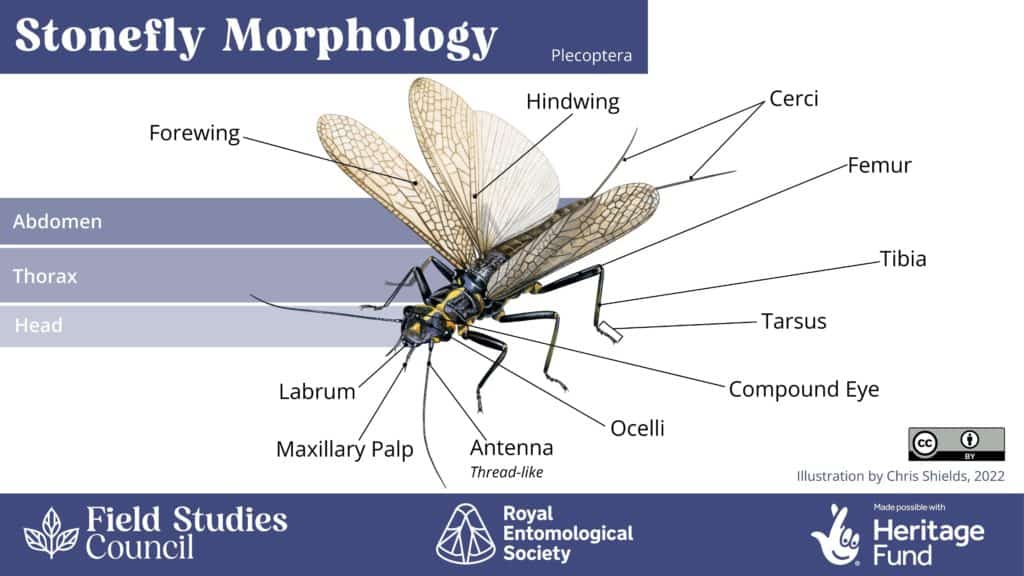
Dragonflies and Damselflies
Order: Odonata
The taxonomic group Odonata contains both dragonflies and damselflies. Our infographic below depicts a typical dragonfly; however, dragonflies and damselflies possess similar body structures and features.
One of the most noticeable features is their long, thin abdomen. They also have two pairs of long wings, which are all similar in size. On their forewings, they have a ‘pterostigma’, a dark blotch along the main vein of the forewing – a feature often used in species identification.
Other key features of the group include their large mobile heads with large compound eyes. This combination of features makes them impressive predators, able to navigate and catch prey at speed.
Dragonfly and damselfly courses.
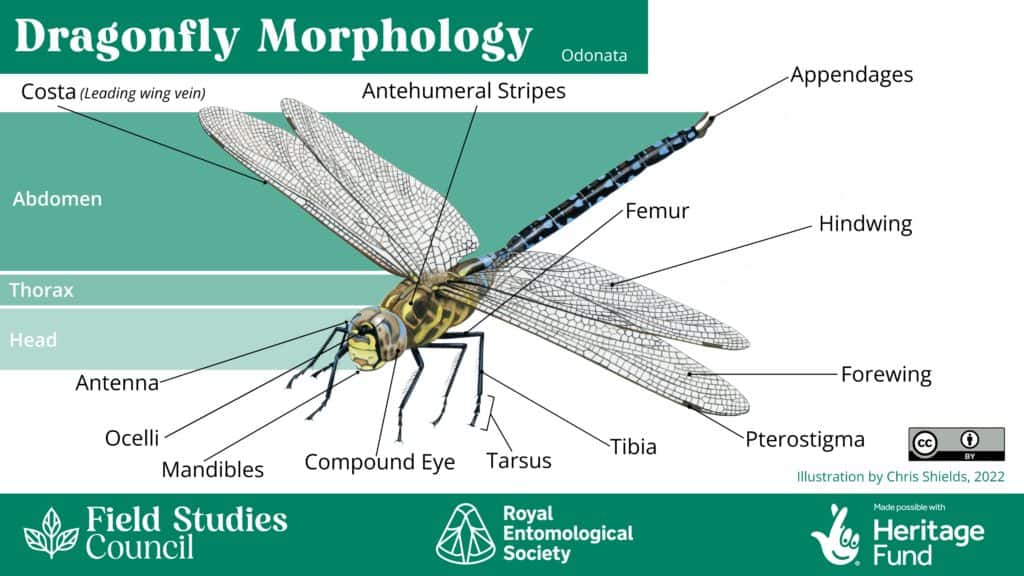
Bees, Wasps, and Ants
Order: Hymenoptera – this group contains bees, wasps, ants, and sawflies.
We have illustrated the bees, wasps, and ants, and for all three, you can see one common feature – a narrowed waist, sometimes referred to as the petiole.
Bees
As mentioned, bees will have a constricted waist, although this may be hard to see in bumblebees and species covered by dense hairs. Hairs are used to keep the bee warm and collect pollen. Some bees will also have a ‘corbicula’ on their hind leg (their ‘pollen basket’), which is used to collect and transport pollen.
All adult bees have two pairs of wings, with larger forewings and smaller hindwings.
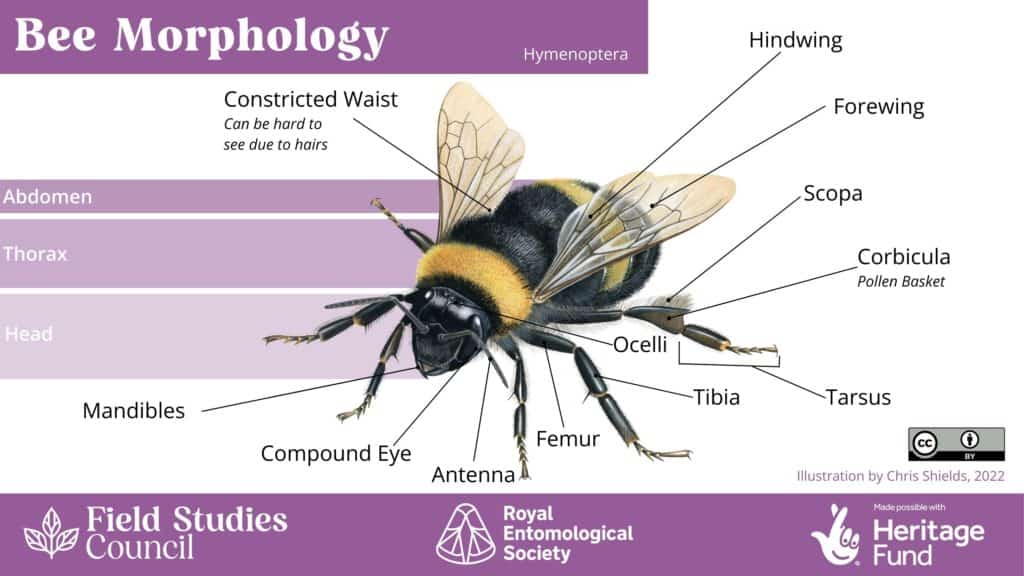
Wasps
Wasps usually have an obvious constricted waist, a smooth body with relatively few hairs, and two pairs of wings. They may also possess a sting at the end of their abdomen, which can subdue prey or defend against predators.
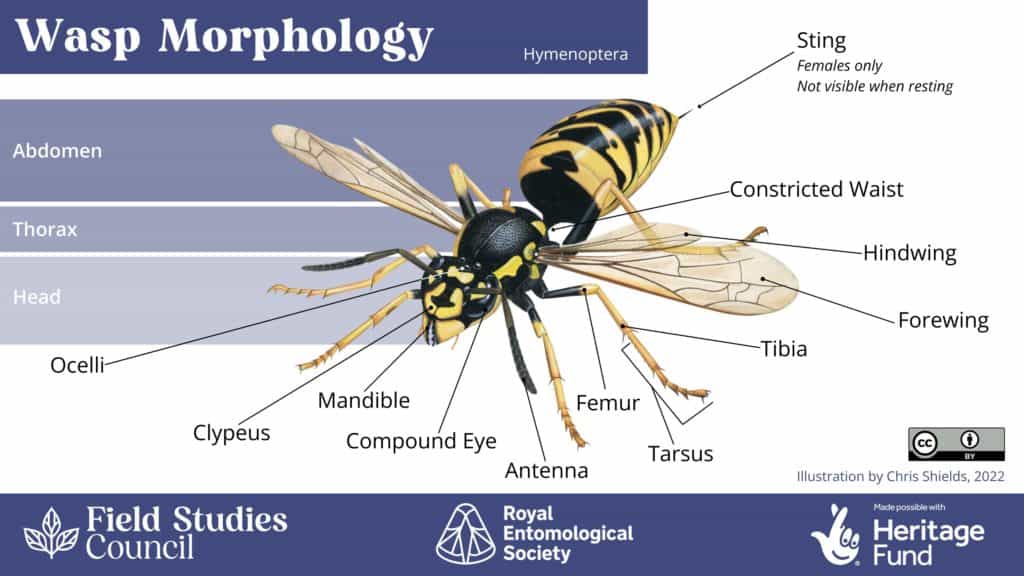
Ants
Ants have the most striking differences when comparing them to bees and wasps. However, ants also vary in form between queens, workers, and males (these are referred to as castes). One key morphological difference between the castes will be the presence or absence of wings, which can also vary with different species.
It’s also worth noting that ants do not entirely conform to the standard insect body plan. Instead, their body sections are more commonly referred to as the head, mesosoma (comprised of the pronotum, mesonotum, and propodeum), petiole, and gaster.
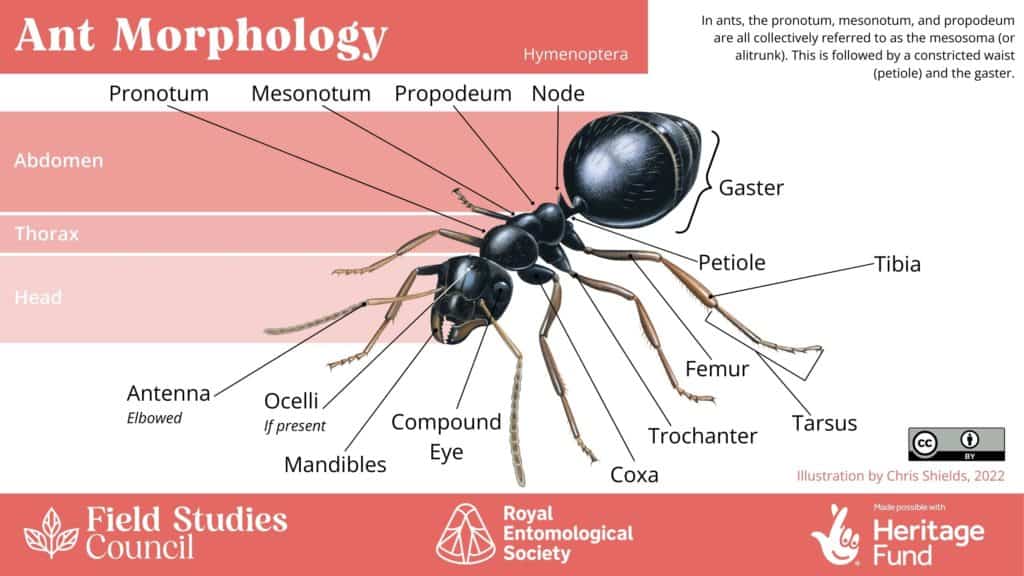
The Field Studies Council would like to thank the BioLinks team for bringing this project to life, plus the National Lottery Heritage Fund and the Royal Entomological Society for their funding and support.
Learn more about insects
Next time you’re out in the garden or on a walk, take a closer look at the insects you spot and try to work out what group they belong to.
Download a PDF of all the infographics.
This blog has not covered or explained all the terminology or features seen on these diagrams, but we will have an online course coming soon that will help – stay tuned for ‘Beginner’s Guide to Terrestrial Invertebrates’. You will be notified of this course going live if you are subscribed to our Biodiversity Newsletter – subscribe now.
Plus, there are plenty of courses and identification resources available if you’d like to continue your learning about insects and their morphology. With options for beginners to experts, there is something for everyone; browse the resources below:

